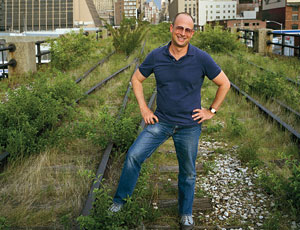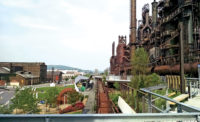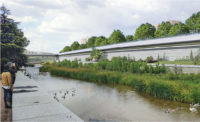Along Tenth Avenue in midtown Man- hattan, the landscape is chocked with building projects, a marked contrast to the national commercial construction slump. But the activity is limited to the vicinity of a mile-long stretch of rail trestle called the High Line. Joshua David and Robert Hammond, co-founders of Friends of the High Line, deserve much of the credit for the boomlet. They are responsible for taking rails-to-trails to new heights by rescuing the derelict trestle from demolition. They also launched a campaign to convince the city to rezone the district to encourage development and to turn the trestle into a linear public garden, with breathtaking views of the Hudson River. It took them only 10 years.

By the time the first half mile of the $170-million High Line park opened on June 8, it had transformed the neighborhood around it, pushing up real estate values and sprouting high-profile residential buildings in what had been an underused, rundown warehouse district.
The High Line stands tall as a model of landscape urbanism and rejuvenation—even for aging, elevated highways. It has already inspired similar efforts in a half-dozen cities, including Chicago, Philadelphia and St. Louis.
It took tenacity and an ability to galvanize a diverse, extensive constituency to support and navigate the project’s complexities, including filing a lawsuit against the city to stop the trestle’s razing. “Joshua David is one of the true heroes of the High Line,” says Amanda Burden, New York City’s planning commissioner.
Hero of Manhattan’s High Line, David helped save an old rail trestle, setting the stage for a city park and catalyzing an ailing district’s renewal.
David was a freelance journalist, writing about travel, food and design, when, in 1999, the trestle caught his attention. “The thing that sparked my interest was that the High Line was unbroken” along its 1.5-mile length, he says.
The second part should open by year-end. Friends of the High Line will then focus on saving the final third, still not city-owned.





